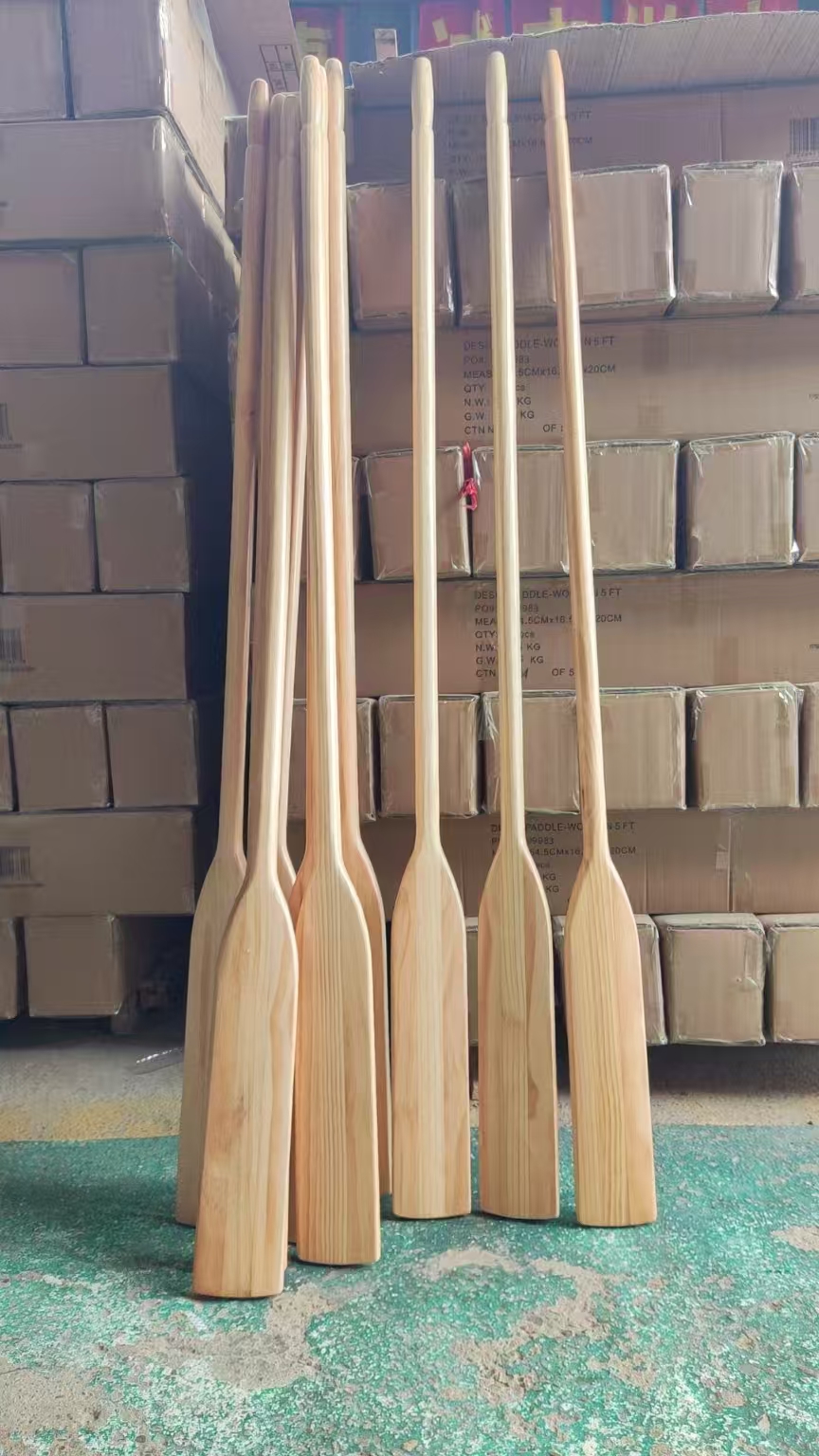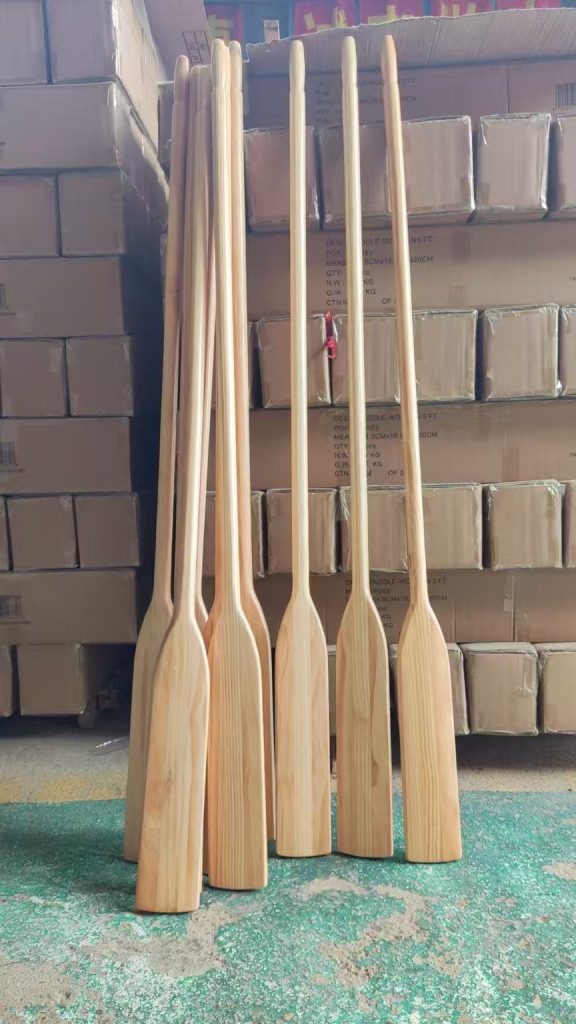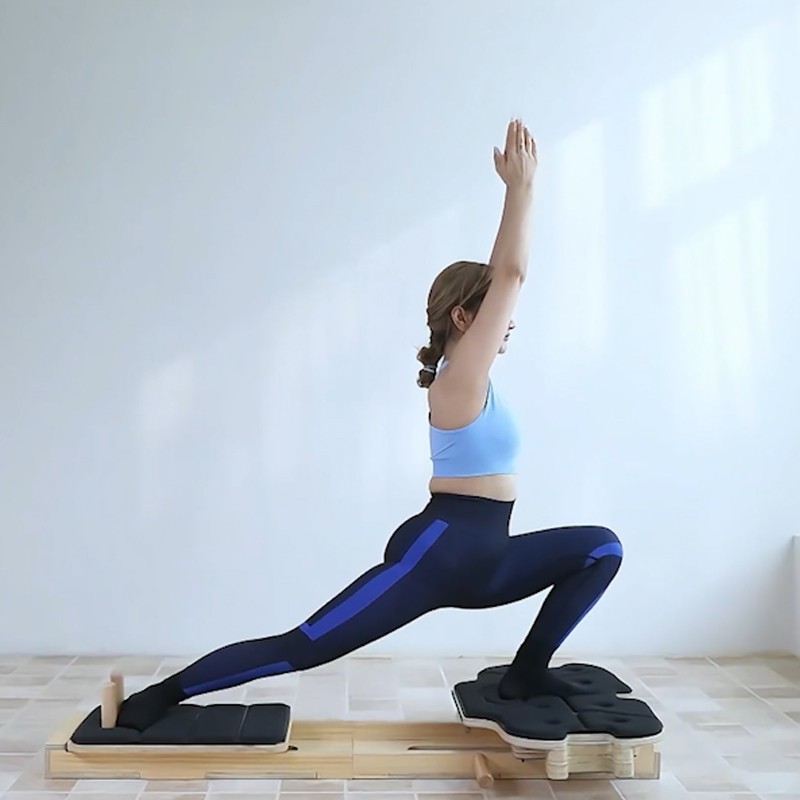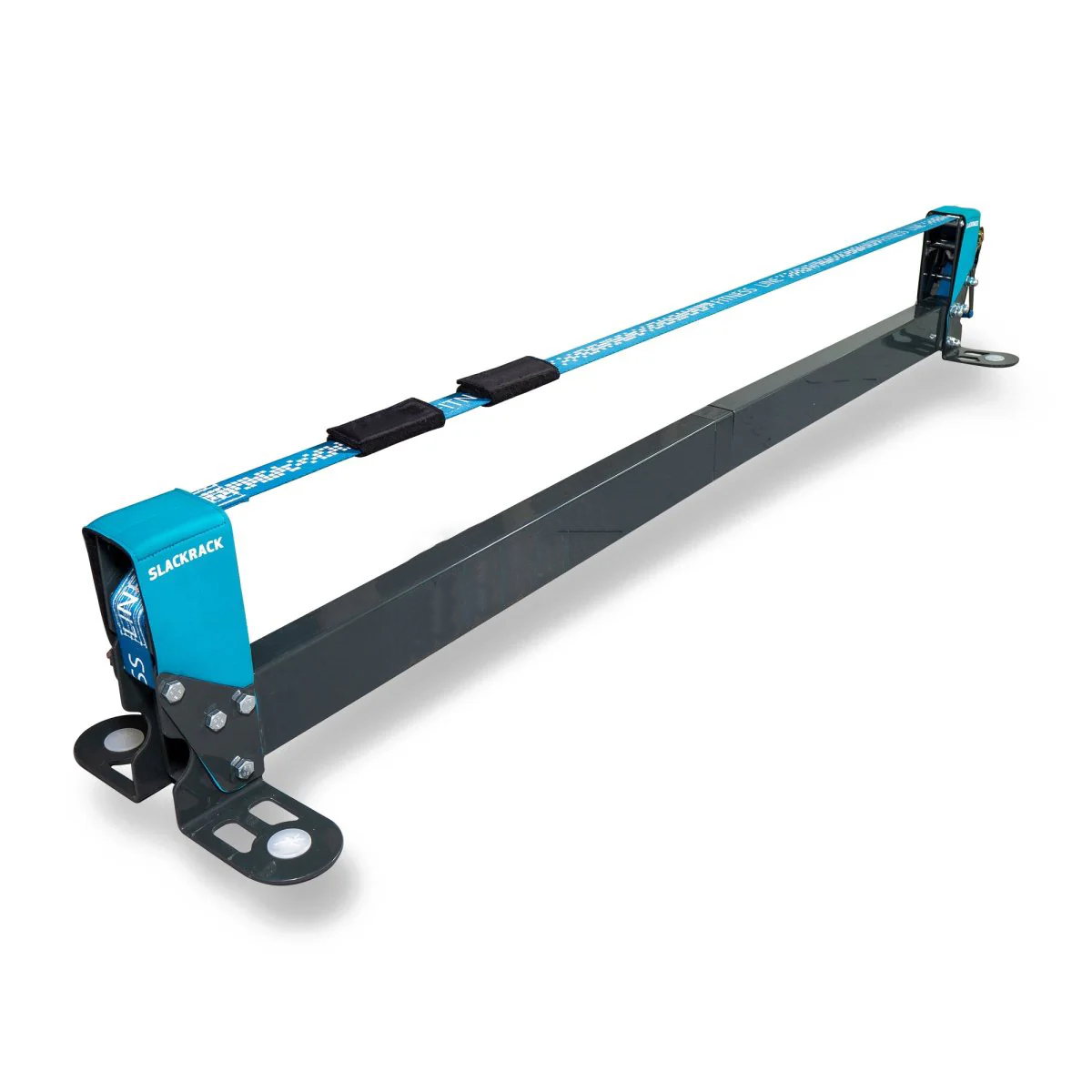
🪶 1. Lightweight and handling
Low density: New Zealand pine has an air-dry density of about 0.4–0.5 g/cm³ (between softwood and hardwood), which is significantly lower than that of traditional hardwoods (e.g. oak 0.7–0.9 g/cm³), making oars lighter and less fatigued during long strokes2.
Elastic support: Its fiber structure combines toughness and moderate rigidity to effectively absorb the impact of water flow when paddling, reducing arm vibration and improving handling comfort2.
⚙️ 2. Adaptation of mechanical properties
Optimized strength-to-weight ratio: Despite being a softwood, New Zealand pine has been genetically modified to grow with uniform grain and moderate flexural strength (about 70 MPa), which is sufficient to withstand the moderate load of canoe paddles and avoid the risk of breakage2.
Fatigue resistance: It is not easy to produce micro-cracks under repeated stress, which is suitable for high-frequency paddling and prolongs the service life of the oar.
✂️ 3. Processing and shaping advantages
Ease of processing
The material is uniform, soft and hard, not easy to split when manual or mechanical processing, and is suitable for carving complex structures such as the curved surface of the paddle and the ergonomic shape of the handle2.
The surface has a high smoothness after grinding, and can be directly coated with varnish or wood wax oil, reducing the post-processing process.
Drying stability
New Zealand’s intensive forestry management ensures that the moisture content of the wood is precisely controlled (typically ≤ 12%), and the finished oars have a low deformation rate in wet conditions and are less prone to warping2.
🌊 Fourth, water resistance and easy maintenance
Natural Corrosion Resistance Improvement: Pine contains a small amount of natural resin, combined with modern kiln drying technology, which can inhibit mold growth. When combined with a waterborne polyurethane coating, the water resistance is significantly improved, making it suitable for both freshwater and mild brackish water environments2.
Low maintenance cost: easy to repair after a slight bump, and the surface can be restored by local grinding, which is better than the repair difficulty of hardwood.
🌱 5. Sustainability and environmental protection
Rapid renewable: With a rotation period of only 28 years and an annual growth of 18–27 m³/ha, the efficiency of resource regeneration is far greater than that of hardwoods (e.g. walnut, which takes 50–80 years)2.
Ecological certification is widespread: More than 90% of New Zealand’s pine forests are sustainably managed plantations (e.g. FSC certified), which meets the needs of environmentally friendly sports equipment2.
⚖️ Sixth, compared with other wood practical advantages
Properties: New Zealand pine, walnut, oak
Weight Very light (suitable for long distances) Heavy (easy to fatigue) Heavy (poor handling)
Cost: Low price (about 1/3 of walnut) High Medium to high
Impact Resistance Medium (Perimeter reinforcement required) ★ Excellent (natural bump resistance) Excellent (High hardness)
Environmental Index ⭐⭐⭐⭐⭐ (Fast-growing certification) ⭐⭐ (Slow growth) ⭐⭐⭐ (Sustainably managed)
★ Improvement scheme: The composite structure of “New Zealand pine main body walnut paddle edge edging” can be adopted, taking into account the needs of lightweight and anti-wear 2.
💎 Summary.
New Zealand pine has become the foundation of canoe oars due to its three core advantages: lightweight, easy to control, process-friendly and eco-sustainable
New Zealand pine offers a number of unique advantages in making wooden canoe paddles, stemming from its physical, processability and ecological properties. The following is analyzed from the core performance dimensions:
🪶 1. Lightweight and handling
Low density: New Zealand pine has an air-dry density of about 0.4–0.5 g/cm³ (between softwood and hardwood), which is significantly lower than that of traditional hardwoods (e.g. oak 0.7–0.9 g/cm³), making oars lighter and less fatigued during long strokes2.
Elastic support: Its fiber structure combines toughness and moderate rigidity to effectively absorb the impact of water flow when paddling, reducing arm vibration and improving handling comfort2.
⚙️ 2. Adaptation of mechanical properties
Optimized strength-to-weight ratio: Despite being a softwood, New Zealand pine has been genetically modified to grow with uniform grain and moderate flexural strength (about 70 MPa), which is sufficient to withstand the moderate load of canoe paddles and avoid the risk of breakage2.
Fatigue resistance: It is not easy to produce micro-cracks under repeated stress, which is suitable for high-frequency paddling and prolongs the service life of the oar.
✂️ 3. Processing and shaping advantages
Ease of processing
The material is uniform, soft and hard, not easy to split when manual or mechanical processing, and is suitable for carving complex structures such as the curved surface of the paddle and the ergonomic shape of the handle2.
The surface has a high smoothness after grinding, and can be directly coated with varnish or wood wax oil, reducing the post-processing process.
Drying stability
New Zealand’s intensive forestry management ensures that the moisture content of the wood is precisely controlled (typically ≤ 12%), and the finished oars have a low deformation rate in wet conditions and are less prone to warping2.
🌊 Fourth, water resistance and easy maintenance
Natural Corrosion Resistance Improvement: Pine contains a small amount of natural resin, combined with modern kiln drying technology, which can inhibit mold growth. When combined with a waterborne polyurethane coating, the water resistance is significantly improved, making it suitable for both freshwater and mild brackish water environments2.
Low maintenance cost: easy to repair after a slight bump, and the surface can be restored by local grinding, which is better than the repair difficulty of hardwood.
🌱 5. Sustainability and environmental protection
Rapid renewable: With a rotation period of only 28 years and an annual growth of 18–27 m³/ha, the efficiency of resource regeneration is far greater than that of hardwoods (e.g. walnut, which takes 50–80 years)2.
Ecological certification is widespread: More than 90% of New Zealand’s pine forests are sustainably managed plantations (e.g. FSC certified), which meets the needs of environmentally friendly sports equipment2.
⚖️ Sixth, compared with other wood practical advantages
Properties: New Zealand pine, walnut, oak
Weight Very light (suitable for long distances) Heavy (easy to fatigue) Heavy (poor handling)
Cost: Low price (about 1/3 of walnut) High Medium to high
Impact Resistance Medium (Perimeter reinforcement required) ★ Excellent (natural bump resistance) Excellent (High hardness)
Environmental Index ⭐⭐⭐⭐⭐ (Fast-growing certification) ⭐⭐ (Slow growth) ⭐⭐⭐ (Sustainably managed)
★ Improvement scheme: The composite structure of “New Zealand pine main body walnut paddle edge edging” can be adopted, taking into account the needs of lightweight and anti-wear 2.
💎 Summary.
New Zealand pine has become the foundation of canoe oars due to its three core advantages: lightweight, easy to control, process-friendly and eco-sustainable








